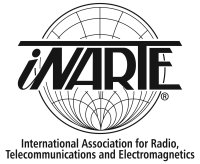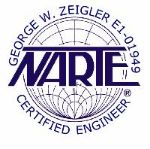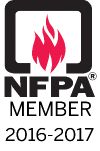Codes and Standards That Require an Arc Fault Analysis
National Electrical Code (NEC) NFPA 70
110.16 Flash Protection.
Switchboards, panelboards, industrial control panels, meter socket enclosures, and motor control centers that are in other than dwelling occupancies and are likely to require examination, adjustment, servicing, or maintenance while energized shall be field marked to warn qualified persons of potential electric arc flash hazards. The marking shall be located so as to be clearly visible to qualified persons before examination, adjustment, servicing, or maintenance of the equipment.
FPN No. 1: NFPA 70E-2004, Standard for Electrical Safety in the Workplace, provides assistance in determining severity of potential exposure, planning safe work practices, and selecting personal protective equipment.
FPN No. 2: ANSI Z535.4-1998, Product Safety Signs and Labels, provides guidelines for the design of safety signs and labels for application to products
National Fire Prevention Code (NFPA) 70E
110.8 Working On or Near Electrical Conductors or Circuit Parts.
(A) General. Safety-related work practices shall be used to safeguard employees from injury while they are working on or near exposed electric conductors or circuit parts that are or can become energized. The specific safety-related work practice shall be consistent with the nature and extent of the associated electric hazards.
(1) Live Parts—Safe Work Condition. Live parts to which an employee might be exposed shall be put into an electrically safe work condition before an employee works on or near them, unless work on energized components can be justified according to 130.1.
(2) Live Parts—Unsafe Work Condition. Only qualified persons shall be permitted to work on electrical conductors or circuit parts that have not been put into an electrically safe work condition.
(B) Working On or Near Exposed Electrical Conductors or Circuit Parts that Are or Might Become Energized. Prior to working on or near exposed electrical conductors and circuit parts operating at 50 volts or more, lockout/tagout devices shall be applied in accordance with 120.1, 120.2, and 120.3. If, for reasons indicated in 130.1, lockout/tagout devices cannot be applied, 130.2(A) through 130.2(D)(2) shall apply to the work.
(1) Electrical Hazard Analysis. If the live parts operating at 50 volts or more are not placed in an electrically safe work condition, other safety-related work practices shall be used to protect employees who might be exposed to the electrical hazards involved. Such work practices shall protect each employee from arc flash and from contact with live parts operating at 50 volts or more directly with any part of the body or indirectly through some other conductive object. Work practices that are used shall be suitable for the conditions under which the work is to be performed and for the voltage level of the live parts. Appropriate safety-related work practices shall be determined before any person approaches exposed live parts within the Limited Approach Boundary by using both shock hazard analysis and flash hazard analysis.
(a) Shock Hazard Analysis. A shock hazard analysis shall determine the voltage to which personnel will be exposed, boundary requirements, and the personal protective equipment necessary in order to minimize the possibility of electrical shock to personnel.
FPN: See 130.2 for the requirements of conducting a shock hazard analysis.
(b) Flash Hazard Analysis. A flash hazard analysis shall be done in order to protect personnel from the possibility of being injured by an arc flash. The analysis shall determine the Flash Protection Boundary and the personal protective equipment that people within the Flash Protection Boundary shall use.
FPN: See 130.3 for the requirements of conducting a flash hazard analysis.
(2) Energized Electrical Work Permit. If live parts are not placed in an electrically safe work condition (i.e., for the reasons of increased or additional hazards or infeasibility per 130.1), work to be performed shall be considered energized electrical work and shall be performed by written permit only.
FPN: See 130.1(A) for the requirements of an energized electrical work permit.
(3) Unqualified Persons. Unqualified persons shall not be permitted to enter spaces that are required under 400.16 to be accessible to qualified employees only, unless the electric
conductors and equipment involved are in an electrically safe work condition.
(4) Safety Interlocks. Only qualified persons following the requirements for working inside the Restricted Approach Boundary as covered by 130.2(C) shall be permitted to defeat or bypass an electrical safety interlock over which the person has sole control, and then only temporarily while the qualified person is working on the equipment. The safety interlock system shall be returned to its operable condition when the work is completed.
130.2 Approach Boundaries to Live Parts.
(A) Shock Hazard Analysis. A shock hazard analysis shall determine the voltage to which personnel will be exposed, boundary requirements, and the personal protective equipment necessary in order to minimize the possibility of electric shock to personnel.
(B) Shock Protection Boundaries. The shock protection boundaries identified as Limited, Restricted, and Prohibited Approach Boundaries are applicable to the situation in which approaching personnel are exposed to live parts. See Table 130.2(C) for the distances associated with various system voltages.
FPN: In certain instances, the Flash Protection Boundary might be a greater distance from the exposed live parts than the Limited Approach Boundary.
(C) Approach to Exposed Live Parts Operating at 50 Volts or More. No qualified person shall approach or take any conductive object closer to exposed live parts operating at 50 volts or more than the Restricted Approach Boundary set forth in Table 130.2(C), unless any of the following apply:
(1) The qualified person is insulated or guarded from the live parts operating at 50 volts or more (insulating gloves or insulating gloves and sleeves are considered insulation only with regard to the energized parts upon which work is being performed), and no uninsulated part of the qualified person's body crosses the Prohibited Approach Boundary set forth in Table 130.2(C).
(2) The live part operating at 50 volts or more is insulated from the qualified person and from any other conductive object at a different potential.
(3) The qualified person is insulated from any other conductive object as during live-line bare-hand work.
Table 130.2(C) Approach Boundaries to Live Parts for Shock Protection. (All dimensions are distance from live part to employee.)
|
(1) |
(2) |
(3) |
(4) |
(5) |
|
Nominal System Voltage Range |
Limited Approach Boundary |
Restricted Approach Boundary |
Prohibited Approach Boundary |
|
|
Phase to Phase |
Exposed Movable Conductor |
Exposed Fixed Circuit Part |
Inadvertent Movement Adder |
|
|
Less than 50 |
Not specified |
Not specified |
Not specified |
Not specified |
|
50 to 300 |
3.05 m (10' 0") |
1.07 m (3' 6") |
Avoid contact |
Avoid contact |
|
301 to 750 |
3.05 m (10' 0") |
1.07 m (3' 6") |
304.8 mm (1' 0".) |
25.4 mm (0' 1") |
|
751 to 15 kV |
3.05 m (10' 0") |
1.53 m (5' 0") |
660.4 mm (2' 2") |
177.8 mm (0' 7") |
|
15.1 kV to 36 kV |
3.05 m (10' 0") |
1.83 m (6' 0") |
787.4 mm (2' 7") |
254 mm (0' 10") |
|
36.1 kV to 46 kV |
3.05 m (10' 0") |
2.44 m (8' 0") |
838.2 mm (2' 9") |
431.8 mm 1' 5") |
|
46.1 kV to 72.5 kV |
3.05 m (10' 0") |
2.44 m (8' 0") |
965.2 mm (3' 2") |
635 mm (2' 1") |
|
72.6 kV to 121 kV |
3.25 m (10' 8") |
2.44 m (8' 0") |
991 mm (3' 3") |
812.8 mm (2' 8") |
|
138 kV to 145 kV |
3.36 m (11' 0") |
3.05 m (10' 0") |
1.093 m (3' 7") |
939.8 mm (3' 1") |
|
161 kV to 169 kV |
3.56 m (11' 8") |
3.56 m (11' 8") |
1.22 m (4' 0") |
1.07 m (3' 6") |
|
230 kV to 242 kV |
3.97 m (13' 0") |
3.97 m (13' 0") |
1.6 m (5" 3") |
1.45 m (4' 9") |
|
345 kV to 362 kV |
4.68 m (15' 4") |
4.68 m (15' 4") |
2.59 m (8' 6") |
2.44 m (8' 0") |
|
500 kV to 550 kV |
5.8 m (19' 0") |
5.8 m (19' 0") |
3.43 m (11' 3") |
3.28 m (10" 9") |
|
765 kV to 800 kV |
7.24 m (23' 9") |
7.24 m (23' 9") |
4.55 m (14' 11") |
4.40 m (14' 5") |
Note: For Flash Protection Boundary, see 130.3(A).
1See definition in Article 100 and text in 130.2(D)(2) and Annex C for elaboration.
(D) Approach by Unqualified Persons. Unqualified persons shall not be permitted to enter spaces that are required under 400.16(A) to be accessible to qualified employees only, unless the electric conductors and equipment involved are in an electrically safe work condition.
(1) Working At or Close to the Limited Approach Boundary. Where one or more unqualified persons are working at or close to the Limited Approach Boundary, the designated person in charge of the work space where the electrical hazard exists shall cooperate with the designated person in charge of the unqualified person(s) to ensure that all work can be done safely. This shall include advising the unqualified person(s) of the electrical hazard and warning him or her to stay outside of the Limited Approach Boundary.
(2) Entering the Limited Approach Boundary. Where there is a need for an unqualified person(s) to cross the Limited Approach Boundary, a qualified person shall advise him or her of the possible hazards and continuously escort the unqualified person(s) while inside the Limited Approach Boundary. Under no circumstance shall the escorted unqualified person(s) be permitted to cross the Restricted Approach Boundary.
130.3 Flash Hazard Analysis.
A flash hazard analysis shall be done in order to protect personnel from the possibility of being injured by an arc flash. The analysis shall determine the Flash Protection Boundary and the personal protective equipment that people within the Flash Protection Boundary shall use.
(A) Flash Protection Boundary. For systems that are 600 volts or less, the Flash Protection Boundary shall be 4.0 ft, based on the product of clearing times of 6 cycles (0.1 second) and the available bolted fault current of 50 kA or any combination not exceeding 300 kA cycles (5000 ampere seconds). For clearing times and bolted fault currents other than 300 kA cycles, or under engineering supervision, the Flash Protection Boundary shall alternatively be permitted to be calculated in accordance with the following general formula:
where:
Dc= distance in feet from an arc source for a second-degree burn
MVAbf= bolted fault capacity available at point involved (in mega volt-amps)
MVA= capacity rating of transformer (mega volt-amps). For transformers with MVA
ratings below 0.75 MVA, multiply the transformer MVA rating by 1.25
t= time of arc exposure (in seconds)
At voltage levels above 600 volts, the Flash Protection Boundary is the distance at which the incident energy equals 5 J/cm2(1.2 cal/cm2). For situations where fault-clearing time is 0.1 second (or faster), the Flash Protection Boundary is the distance at which the incident energy level equals 6.24 J/cm2(1.5 cal/cm2).
(A)Protective Clothing and Personal Protective Equipment for Application with a Flash Hazard Analysis. Where it has been determined that work will be performed within the Flash Protection Boundary by 130.3(A), the flash hazard analysis shall determine, and the employer shall document, the incident energy exposure of the worker (in calories per square centimeter). The incident energy exposure level shall be based on the working distance of the employee's face and chest areas from a prospective arc source for the specific task to be performed. Flame-resistant (FR) clothing and personal protective equipment (PPE) shall be used by the employee based on the incident energy exposure associated with the specific task. Recognizing that incident energy increases as the distance from the arc flash decreases, additional PPE shall be used for any parts of the body that are closer than the distance at which the incident energy was determined As an alternative, the PPE requirements of 130.7(C)(9) shall be permitted to be used in lieu of the detailed flash hazard analysis approach described in 130.3(A).
FPN: For information on estimating the incident energy, see Annex D.
400.11 Flash Protection.
Switchboards, panelboards, industrial control panels, and motor control centers that are in other than dwelling occupancies and are likely to require examination, adjustment, servicing, or maintenance while energized shall be field marked to warn qualified persons of potential electric arc flash hazards. The marking shall be located so as to be clearly visible to qualified persons before examination, adjustment, servicing, or maintenance of the equipment.
29 CURRENT FEDERAL REGISTER (29 CFR)
1910.132 General requirements.
(a) Application. Protective equipment, including personal protective equipment for eyes, face, head, and extremities, protective clothing, respiratory devices, and protective shields and barriers, shall be provided, used, and maintained in a sanitary and reliable condition wherever it is necessary by reason of hazards of processes or environment, chemical hazards, radiological hazards, or mechanical irritants encountered in a manner capable of causing injury or impairment in the function of any part of the body through absorption, inhalation or physical contact.
(b) Employee-owned equipment. Where employees provide their own protective equipment, the employer shall be responsible to assure its adequacy, including proper maintenance, and sanitation of such equipment.
(c) Design. All personal protective equipment shall be of safe design and construction for the work to be performed.
(d) Hazard assessment and equipment selection.
(1) The employer shall assess the workplace to determine if hazards are present, or are likely to be present, which necessitate the use of personal protective equipment (PPE). If such hazards are present, or likely to be present, the employer shall:
(i) Select, and have each affected employee use, the types of PPE that will protect the affected employee from the hazards identified in the hazard assessment;
(ii) Communicate selection decisions to each affected employee; and,
(iii) Select PPE that properly fits each affected employee.
Note: Non-mandatory Appendix B contains an example of procedures that would comply with the requirement for a hazard assessment.
(2) The employer shall verify that the required workplace hazard assessment has been performed through a written certification that identifies the workplace evaluated; the person certifying that the evaluation has been performed; the date(s) of the hazard assessment; and, which identifies the document as a certification of hazard assessment.
(e) Defective and damaged equipment. Defective or damaged personal protective equipment shall not be used.
(f) Training.
(1) The employer shall provide training to each employee who is required by this section to use PPE. Each
such employee shall be trained to know at least the following:
(i) When PPE is necessary;
(ii) What PPE is necessary;
(iii) How to properly don, doff, adjust, and wear PPE;
(iv) The limitations of the PPE; and,
(v) The proper care, maintenance, useful life and disposal of the PPE.
(2) Each affected employee shall demonstrate an understanding of the training specified in paragraph (f)(1) of this section, and the ability to use PPE properly, before being allowed to perform work requiring the use of PPE.
(3) When the employer has reason to believe that any affected employee who has already been trained does not have the understanding and skill required by paragraph (f)(2) of this section, the employer shall retrain each such employee. Circumstances where retraining is required include, but are not limited to, situations where:
(i) Changes in the workplace render previous training obsolete; or
(ii) Changes in the types of PPE to be used render previous training obsolete; or
(iii) Inadequacies in an affected employee's knowledge or use of assigned PPE indicate that the employee has not retained the requisite understanding or skill.
(4) The employer shall verify that each affected employee has received and understood the required training through a written certification that contains the name of each employee trained, the date(s) of training, and that identifies the subject of the certification.
(g) Paragraphs (d) and (f) of this section apply only to §§1910.133, 1910.135, 1919.136, and 1910.138. Parpagraphs (d) and (f) of this section do not apply to §§1910.134 and 1910.137. [39 FR 23502, June 27, 1974, as amended at 59 FR 16334, Apr. 6, 1994; 59 FR 33910, July 1, 1994]
1926.28 Personal protective equipment.
(a) The employer is responsible for requiring the wearing of appropriate personal protective equipment in all operations where there is an exposure to hazardous conditions or where this part indicates the need for using such equipment to reduce the hazards to the employees.
(b) Regulations governing the use, selection, and maintenance of personal protective and lifesaving equipment are described under subpart E of this part.





